How to setup LDAP login provider for Identify
LDAP web service Setup
Install the LDAP web service configurator.
Step 1: create the LDAP web service where its settings looks like following screenshot:
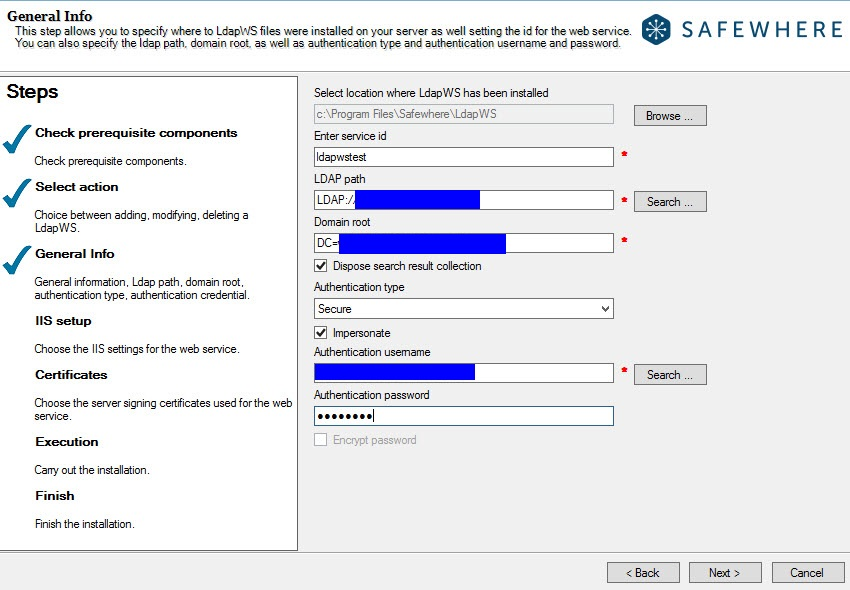
Step 2: in "IIS setup" screen, update settings likes below:
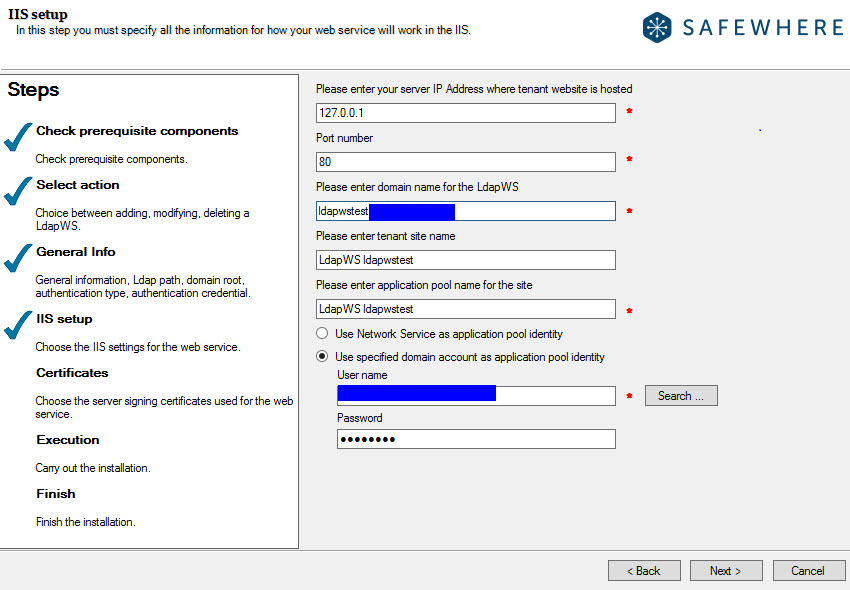
Step 3: in "Certificates" screen, update certificates information:
- The certificate: "LDAP web service server certificate" for the server certificate section
- The certificate: "LDAP web service client certificate" for the client certificate section

Step 4: once the LDAP web service is created successfully, go to Safewhere Admin > Settings > "LDAP web service" tab:
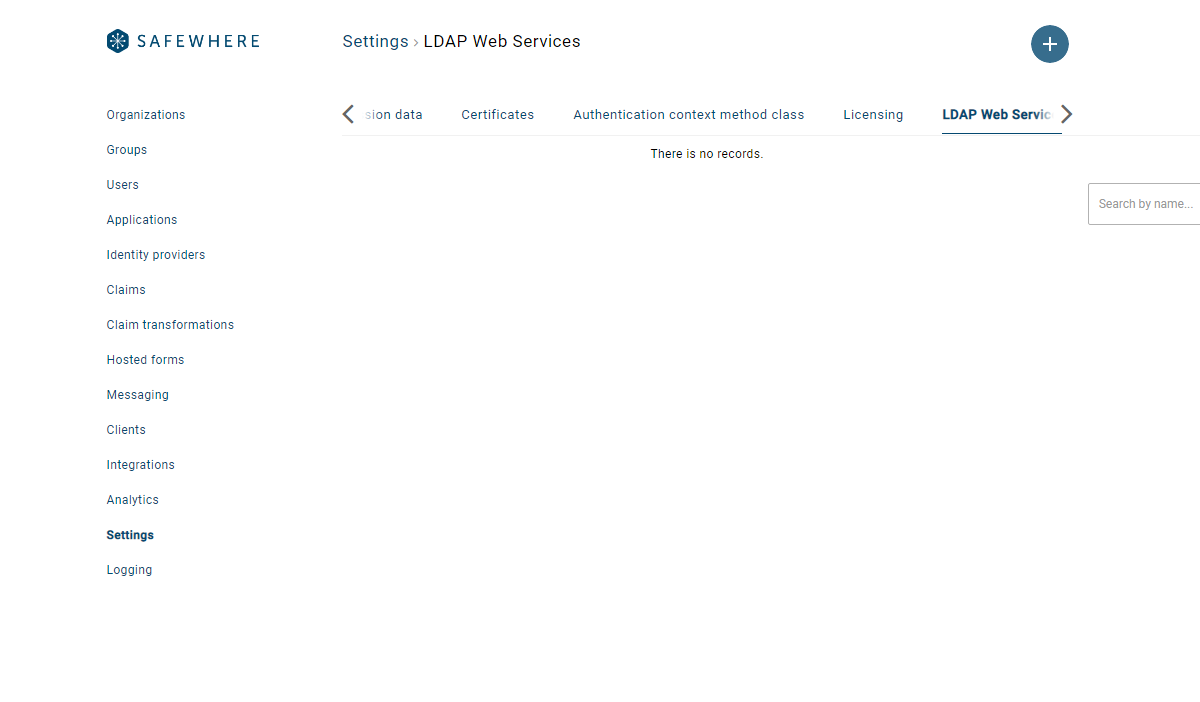
Step 5: create the LDAP web service whose name is "ldapwstest" and point to: "http://#LDAPdomain/LdapCredentialsService.svc" like below:
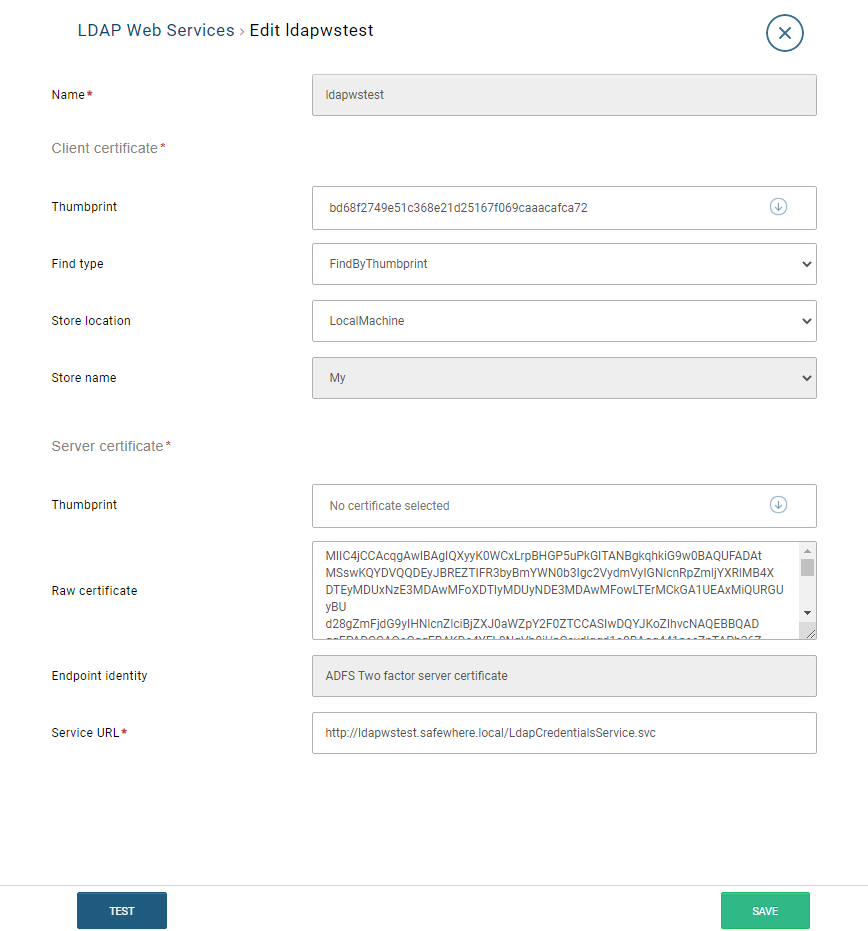
Step 6: after clicking "Save" button and the LDAP web service is created successfully, you can use the "Test" button to verify it.
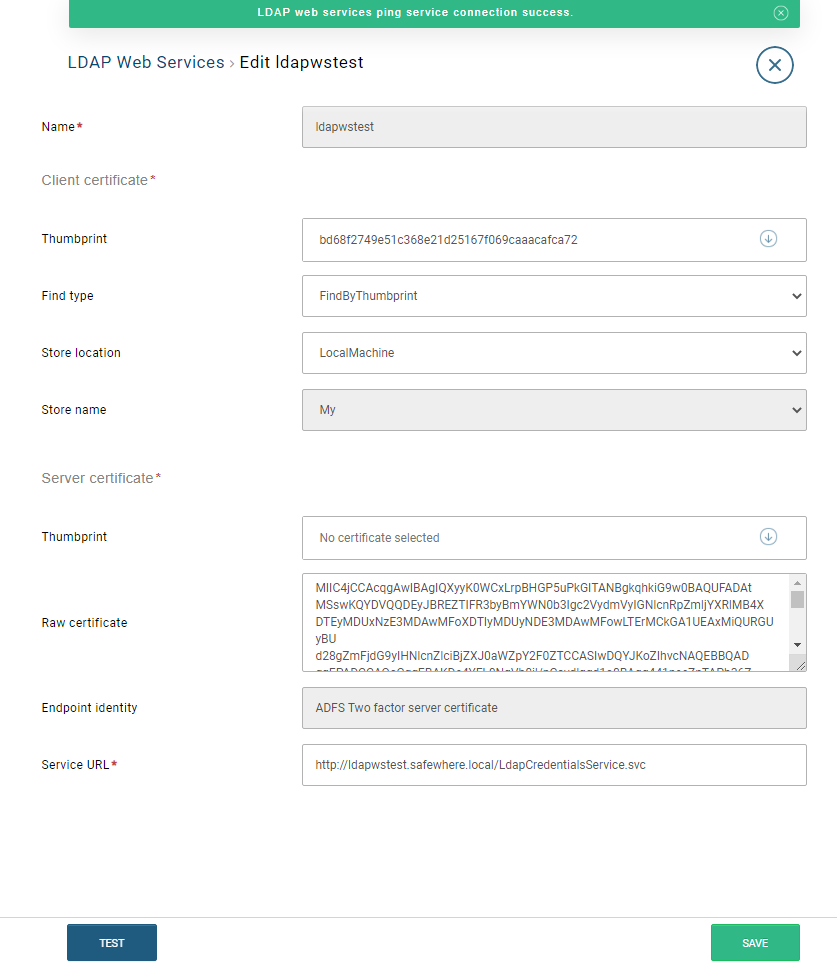
Claim Transformation for LDAP identity provider
To convert the AD attributes from the AD server to Identify, create the LDAP transformation named "LDAP Claim Transformation" in Safewhere Admin. Following settings need to be updated:
- LdapWS service name: choose "ldapwstest"
- LDAP attribute to filter for user object: select "SAM-Account-Name"
- Claim type to extract value from claims principal to match against the LDAP attribute Name: select Name claim.
- Map the AD attributes to the Identify claim types.

LDAP identity provider setup
Using Safewhere Admin, go to "Identity providers" page, create an LDAP identity provider and update following settings:
Step 1: in "Connection" tab:
- Authentication type: select "FormBased"
- Domain: input your AD domain name.
- Identity's LDAP attribute: choose "SAM-Account-Name".
- LDAP WS service name: choose the new created "ldapwstest" LDAP web service.
- LDAP attribute to specify the primary account: choose "SAM-Account-Name".
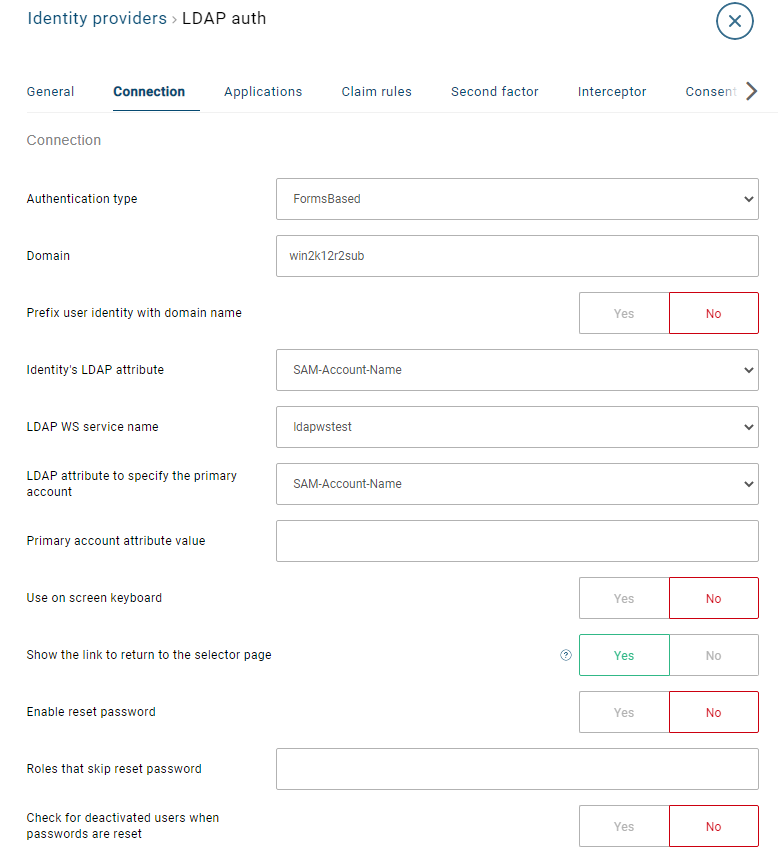
Step 2: in "Claim rules" tab, add the new created LDAP transformation.
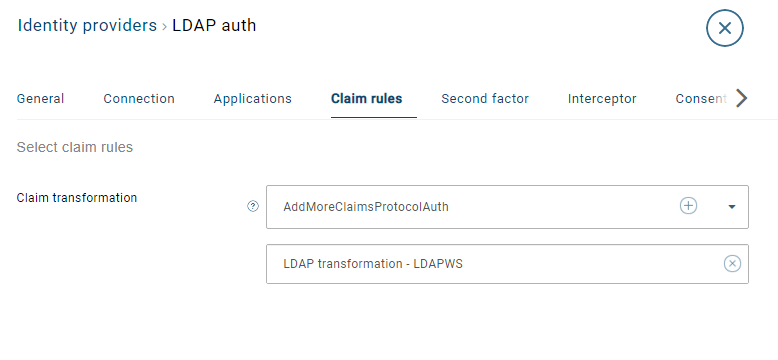
Step 3: save the LDAP identity provider.
To get rid off using web service, you can also use the "Direct AD". See the instruction here.